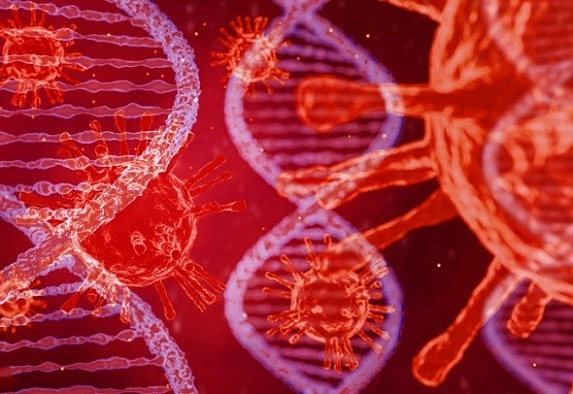Nikhil Prasad Fact checked by:Thailand Medical News Team Jul 07, 2025 5 months, 2 weeks, 3 days, 9 hours ago
Medical News: SARS-CoV-2 Nucleocapsid Protein Found to Block Key Immune System Sensor
A team of scientists from the Max Planck Institute of Cell Biology and Genetics in Dresden, Germany, has uncovered another clever trick used by the SARS-CoV-2 virus to weaken our immune defense. The virus is already known for its ability to hide from the body’s early immune detection systems that monitor for foreign RNA. Now, this
Medical News report reveals it also thwarts another critical line of defense that detects abnormal DNA in infected cells.
 SARS-CoV-2 Disarms Human Immunity by Hijacking DNA Sensors
SARS-CoV-2 Disarms Human Immunity by Hijacking DNA Sensors
This new discovery centers around the virus’s nucleocapsid protein—a structural component that packages the virus’s genetic material. The researchers found that this protein doesn’t just bind to viral RNA but can also bind tightly to DNA inside human cells. By doing this, the protein prevents a key immune molecule called cGAS from recognizing leaked DNA and triggering an antiviral response.
A Breakdown of the Immune Disruption Mechanism
In healthy cells, the immune system uses cGAS (cyclic GMP-AMP synthase) to detect DNA that’s out of place—like when it leaks from damaged mitochondria or the cell nucleus during infection. When cGAS finds this DNA, it activates another protein called STING, which sets off a chain reaction that helps the body fight off viruses by producing interferons, a type of immune signal.
However, the German team found that the SARS-CoV-2 nucleocapsid protein can outcompete cGAS for this leaked DNA. This means that the virus effectively masks the DNA from the immune system’s detection machinery. The virus wins the molecular tug-of-war by binding tightly to DNA and forming condensed droplets around it, keeping cGAS away.
Using a wide range of advanced lab techniques—including optical tweezers, fluorescence imaging, and protein purification—the researchers demonstrated that the unphosphorylated form of the nucleocapsid protein has an especially high binding strength to DNA. Interestingly, a phosphorylated version of the same protein loses this ability, suggesting that the virus may fine-tune its immune evasion based on protein modifications during different stages of infection.
Key Study Findings in Simple Terms
The SARS-CoV-2 nucleocapsid protein binds strongly to both RNA and DNA, but especially to double-stranded DNA.
When this protein is unphosphorylated (not chemically modified), it can tightly bind DNA and block cGAS from activating.
This protein-DNA binding forms tiny condensed droplets that physically isolate the DNA from cGAS.
As a result, the immune system’s alarm system doesn’t go off during the early stages of infection.
When the nucleocapsid protein is phosphorylated (chemically tagged by enzymes), it can no longer bind DNA effectively, reducing its immune-bloc
king ability.
Why This Matters
This study is important because it shows that SARS-CoV-2 doesn’t just fool the body by hiding its own RNA—it also interferes with how the body detects its own damaged DNA during infection. This double-edged evasion likely contributes to the virus’s ability to spread silently and efficiently during early infection stages, before the body mounts a proper defense.
The findings also suggest that other RNA viruses might use similar strategies, and that targeting the nucleocapsid protein’s interaction with DNA could be a potential therapeutic approach. Scientists may now look into designing drugs that prevent this competitive binding, giving the immune system a better chance to fight off the virus.
The study findings were published in the peer reviewed journal: Proceedings of the National Academy of Sciences (PNAS)
https://www.pnas.org/doi/10.1073/pnas.2426204122
For the latest COVID-19 News, keep on logging to Thailand
Medical News.
Read Also:
https://www.thailandmedical.news/news/french-study-finds-that-sars-cov-2-preferentially-infects-intestinal-cells-causing-barrier-damage-and-potential-systemic-spread
https://www.thailandmedical.news/news/covid-19-and-glioblastoma-onset
https://www.thailandmedical.news/news/breaking-covid-19-triggers-rna-protein-that-fuels-cancer-progression
